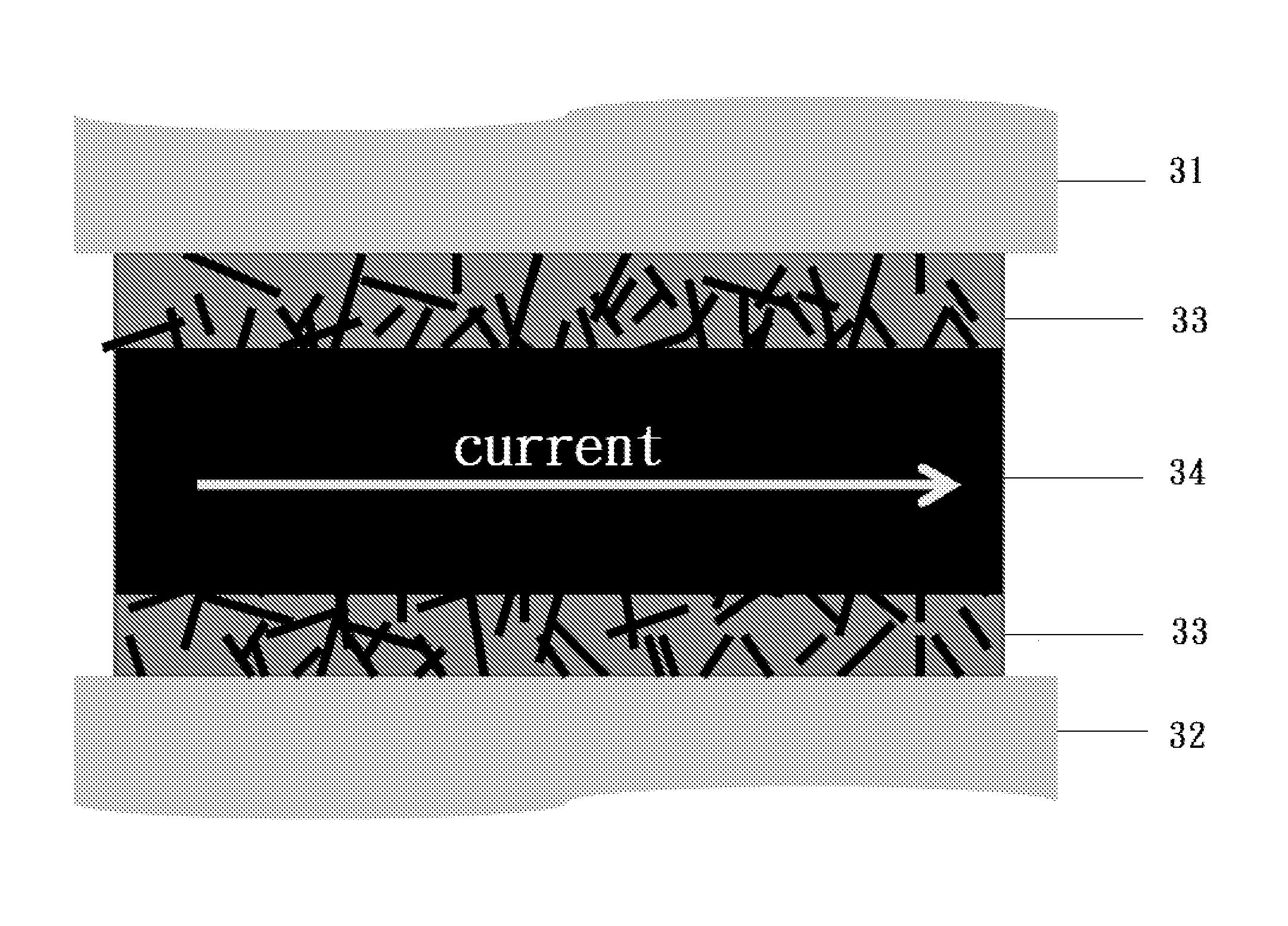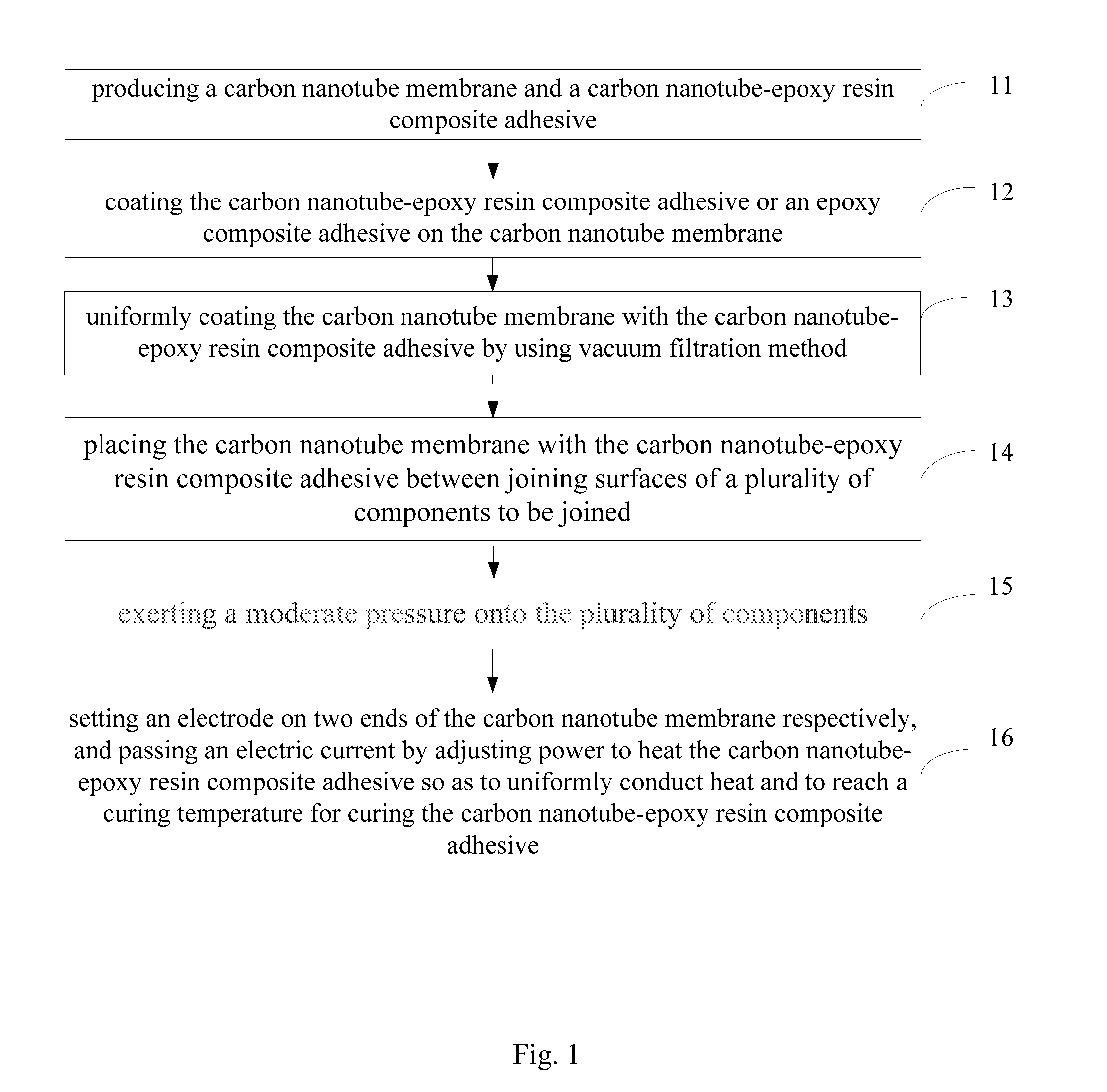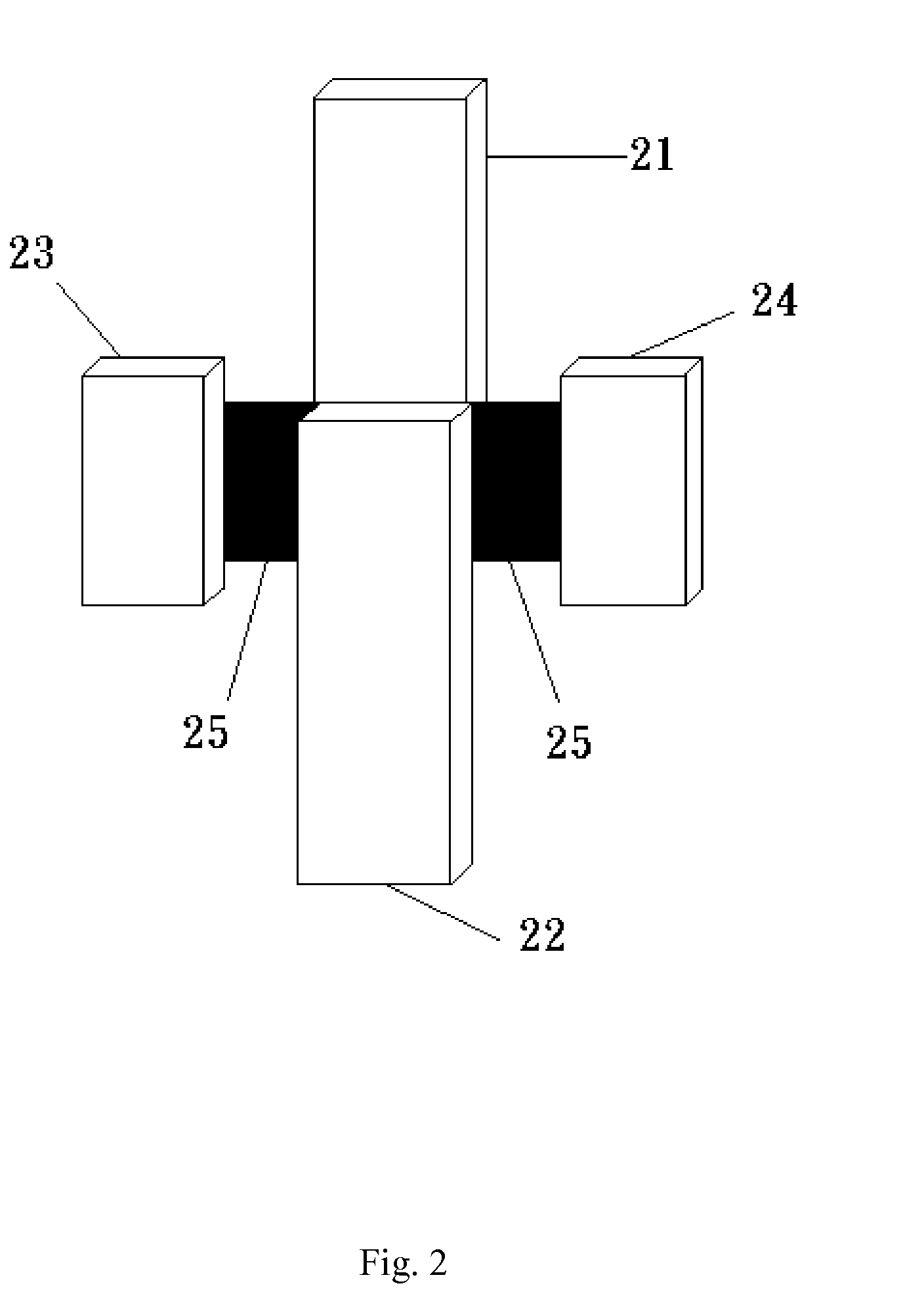Method for bonding components by utilizing joule heating to cure carbon nanotube-epoxy resin composite adhesive
a carbon nanotube and epoxy resin technology, applied in the direction of lamination ancillary operations, material nanotechnology, chemistry apparatus and processes, etc., can solve the problems of wasting a lot of heat energy, and reducing the curing time required
- Summary
- Abstract
- Description
- Claims
- Application Information
AI Technical Summary
Benefits of technology
Problems solved by technology
Method used
Image
Examples
Embodiment Construction
[0022]The technical characteristics and operation processes of the present invention will become apparent with the detailed description of preferred embodiments. While the invention has been described in terms of various specific embodiments, those skilled in the art will recognize that the invention can be practiced with modification within the spirit and scope of the claims.
[0023]Please refer to FIG. 1, which is a production flow chart showing one embodiment of the present invention. First of all, producing a carbon nanotube membrane and a carbon nanotube-epoxy resin composite adhesive 11, wherein the carbon nanotube membrane is a thin film produced from carbon nanotubes. In this embodiment, the carbon nanotubes-epoxy composite adhesive has a content of carbon nanotubes occupying a percentage of weight of 0˜6 wt %, and the carbon nanotubes-epoxy composite adhesive is a high-temperature solidification type epoxy resin with hardener added; then, coating the carbon nanotube-epoxy res...
PUM
| Property | Measurement | Unit |
|---|---|---|
| diameter | aaaaa | aaaaa |
| lap shear strength | aaaaa | aaaaa |
| lap shear strength | aaaaa | aaaaa |
Abstract
Description
Claims
Application Information
 Login to View More
Login to View More - R&D
- Intellectual Property
- Life Sciences
- Materials
- Tech Scout
- Unparalleled Data Quality
- Higher Quality Content
- 60% Fewer Hallucinations
Browse by: Latest US Patents, China's latest patents, Technical Efficacy Thesaurus, Application Domain, Technology Topic, Popular Technical Reports.
© 2025 PatSnap. All rights reserved.Legal|Privacy policy|Modern Slavery Act Transparency Statement|Sitemap|About US| Contact US: help@patsnap.com



